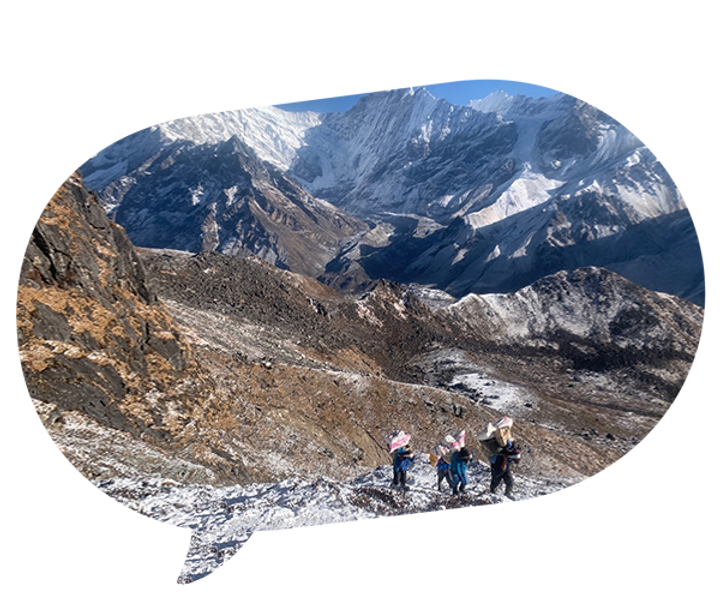A routine set of blood tests later revealed anaemia, my haemoglobin having dropped to 100g/L. Initially, I optimistically hoped that perhaps this was a vitamin or iron deficiency brought on by switching to a vegetarian diet during covid times. Indeed, taking iron tablets raised the haemoglobin, but the local haematologist expressed more concern about my high blood protein levels.
After a bone marrow biopsy, I got a call from their clinic. When they started describing the discovery of Waldenstrom’s macroglobulinaemia cells, I was so ignorant that I was not sure if this was good news or something bad like how much Kryptonite was in Superman’s blood! They quickly put me right, pointing out WM was rare, not currently curable but treated with a variety of different techniques.
Following the shock of this news, I tried to console myself with the thought that at least I was suffering from something special, not just any old common complaint. This quickly changed into the realisation that not many doctors or clinics might have much experience treating it, and what should I actually do?
I have to thank my daughter-in-law for finding out about WM specialists which helped me eventually connect up with the experts at University College of London Hospital (UCLH). Around six months later and by now with a total IgM level of 47g/L, I started six cycles of DRC. The worst part of each cycle was nausea. The tiredness was not unlike bad jet lag. I rather admire other WM’ers who read lots or binge-watched favourite Netflix series. All I could do was stare at the ceiling and try to snooze away the difficult days.
Up and Over
I like walking, but isn’t it too ambitious for a WM’er to be trekking in the Nepal Himalayas ? Well maybe; I was back there to find out. I have done a few trails before and this was kind of a test if there is still “life in the old dog”.
Curiously, slowly trudging along endlessly, one foot in front of another, does seem to bring you closer to a natural state of mindfulness. After a while you realise that there is no point in wondering if you are nearly there, because of course in this place one never is. The mountains reach up majestically way above into the sky.
An odd thing about altitude sickness is that the symptoms feel similar to my DRC chemo experience. Headache, fatigue, slight nausea, loss of appetite. Just have to take your time, try to eat, drink and not rush things.
The heavier my own legs might feel though, the more amazing it is how ordinary life is carrying on around me. Nepalese porters carrying unbelievably heavy loads, farmers sowing their crops, school children walking miles home from classes, Buddhist monks visiting remote villages, and Tibetan refugee women washing piles of clothes in freezing water. No-one is complaining. These people are a real inspiration, making the best of their tough circumstances.
We reached the top of the valley, well as far as non-mountain goats can go. Now, it was a simple choice: all the way back down or follow the trusty guide up across Ganja-La pass to another valley. As it got steeper, progress slowed to a snail’s pace. I wondered if WM was finally reminding me it was still there; but what a relief, my wife was panting away too ! One last slog, then there we were. Looking around at endless peaks from Ganja-La pass, all one’s troubles seemed small in the big scale of things; and suddenly life felt just as amazing with WM as it was before.
“Looking around at endless peaks from Ganja-La pass, all one’s troubles seemed small in the big scale of things; and suddenly life felt just as amazing with WM as it was before”
Watching and waiting
So now I am off to my next monitoring blood test. These days, I am not as scared of the needle prick as I used to be. Sometimes you scarcely even feel it going in. Even if you are feeling generally well though, we all share that apprehension about the IgM level; has it started to increase again ? One uncertain day of course, it inevitably will.
However, this time round, there is one thing that I very certain about. I have had an awesome time since my last blood test!
A big thank you to all the kind Nepalese who helped us.
Back in the UK, gratitude is due to our NHS and the incredible UCLH WM team: Dr Shirley D’Sa and Dr Ali Rismani.
Thank you WMUK for all your support; and Bob Perry for an amazing job with its coordination. None of us signed up for WM, but it really feels as though you are not alone, but have gained an extended family.
Finally, we tend to take our partners for granted. It is only when the going gets tougher, that you are suddenly reminded how wonderful their care and support actually is.



